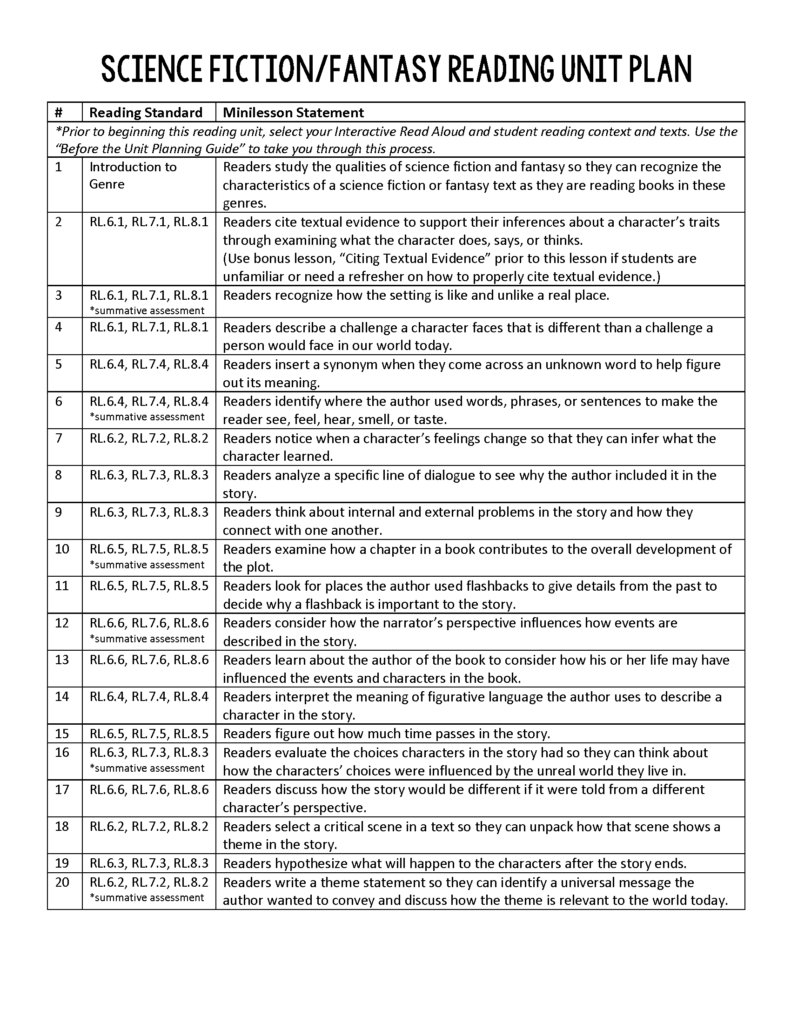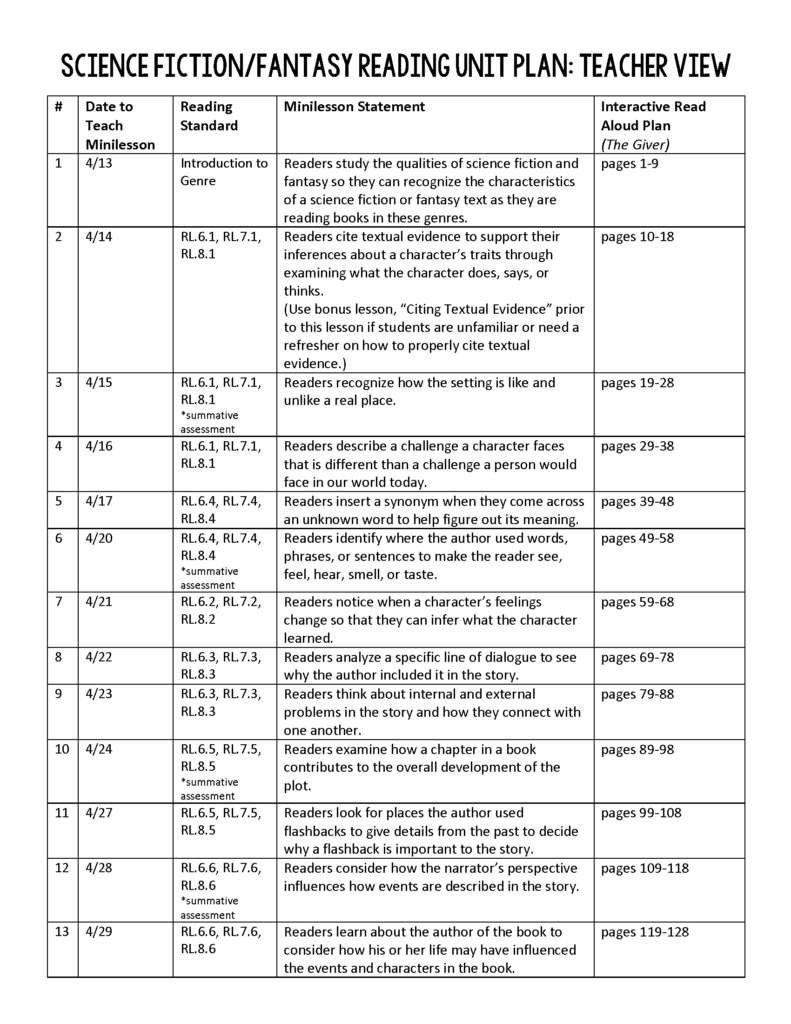We are ELA teachers. Logistics and doing tasks in sequential order aren’t always our strong suits. I don’t want to speak for all ELA teachers, but from personal experience, I am a bit of a free spirit and love to brainstorm and act quickly on new ideas. Where that sometimes doesn’t go well for me in the teaching world is I tend to get excited about an upcoming unit and jump in without having all of my ducks in a row.
This blog post is dedicated to my fellow free-spirited ELA teachers who sometimes let exciting ideas take flight before the logistics are set into place. I am going to lay out the eight steps you should take prior to starting a reading unit. Doing the work on the front end to get your reading unit organized will pay off during the reading unit for you and your students. I’d also like to point out that if you’re part of a team, all of the steps below are great to complete together so that you’re on the same page and functioning as a strong PLC.
STEP ONE: Examine your reading unit plan
Always start with your unit plan. Look through the reading minilessons in your unit plan critically.
-What minilessons would you like to add?
-What minilessons would you like to delete?
-What minilessons would you like to change the wording?
-Check to make sure your minilessons cover a variety of reading standards.
-Inspect the order of the minilessons and change the order around as needed so that you’re presenting the reading minilessons in a strategic way to your students across the unit.
An example of what I means by a reading unit plan with a sequential list of reading minilesson statements is linked below. This reading unit plan is from my Science Fiction/Fantasy Reading Unit.

STEP TWO: Determine your assessment plan
Select which reading minilessons you will formatively assess throughout the reading unit. I recommend selecting one reading minilesson to formatively assess from each of your priority reading standards. For example, the priority reading standards I report out on for my students are (R.1, R.2, R.3, R.4, R.5, R.6), so would select one reading minilesson from each of these standards. The reading minilessons that you decide to formatively assess should build your end-of-unit summative assessment. If you refer back to the reading unit plan above, you can see that six reading minilessons are marked as “summative assessment,” one from each of the priority reading standards.
STEP THREE: Decide what method you will use to assess during the formative assessments.
We all have our go-to ways that we like to assess students. I can get pretty redundant if we use the exact same way every single time. Formative assessments can be easily varied with a few options in your toolbox. Plan ahead and intentionally use different methods to formatively assess across a reading unit. Here are a few ideas of formative assessment methods to use:
-Short answer response
-Reading response paragraph
-Exit Ticket
-Teacher-Student Interview
-Google Form
-Multiple choice with explanation of chosen answer
-Small group discussion
-Digital spoken response (Flipgrid, Mote, Screencastify)
STEP FOUR: Design a Pre-Assessment
This is something I haven’t always done, and I don’t think you have to give students a huge pre-assessment. However, you can gain a lot of valuable information by using a pre-assessment before a reading unit begins to see what students already know and what areas you may have to go a little deeper. My recommendation if you’re just getting started with the concept of a pre-assessment is to have students read a picture book, chapter of a book, or short story in the genre of the reading unit you are doing and then have students complete a pre-assessment based on 1-2 of the reading standards that will be assessed on the summative assessment at the end of the unit.
STEP FIVE: SELECT & PREPARE YOUR TEXTS
Once you know the genre and reading minilessons of the reading unit you’re going to teach, think critically about the texts you want to use for the interactive read aloud and student texts. For the reading units I do with students, I generally have an interactive read aloud in the genre of the reading unit and 4-5 book options in the same genre for students to select from. I then meet with small groups of students reading the same book once a week for each group. (Other teachers may have a whole class novel or just do small group reading instruction with no interactive read aloud. Whatever reading format you’re going to use for the reading unit, you still need to pick out the texts.)
Every year when teaching a new unit, my team and I have critical conversations about what students texts and read aloud texts worked well and which did not so that we swap out books as needed to keep reading units relevant and engaging to students. We also make sure we have enough copies of each text and that the texts are available digitally and have audio available as well.
STEP SIX: DECIDE ON THE STUDENT READING CONTEXT
What format will your students read their books in for this unit? The formats I choose from are:
- Reading Strategies Groups (teacher meets with groups flexibly to reinforce the reading strategies covered in the reading minilessons, students select student texts)
- Guided Reading (teacher prepares guided reading lessons and facilitates the conversation, teacher selects student texts)
- Literature Study (students bring discussion points to guide conversation, students select student texts)
- Independent Reading (teacher holds one-on-one reading conferences, students select student texts)
There isn’t one format that’s better than another. However, use a variety of student reading contexts across the school year to mix it up. Students should be in reading groups with a variety of other students in their class and get to experience the book discussions in different contexts.
STEP SEVEN: PICK VOCABULARY FROM IRA
If you plan to infuse vocabulary instruction during your reading unit, take the time to select 1-2 vocabulary words from each section of your read aloud to use with students daily. Getting this planned out before the unit even begins will ensure that it doesn’t fall by the wayside.
STEP EIGHT: MAKE A DETAILED TEACHER UNIT PLAN
Now that you have all the details ironed out, it’s time to take that unit plan and add the sparkle. Items I like to add into my “Teacher Unit Plan” are: dates I plan to teach each reading minilesson and pages I plan to read each day of the interactive read aloud. An example “Teacher View” unit plan is pictured below from my Science Fiction/Fantasy Reading Unit.

You are officially ready to enjoy the reading unit ahead with your students!
If you are looking for reading units based on genres that include all the things (teacher lesson plans, formative/summative assessment, reference sheets/anchor charts, resources for small group reading instruction) check out my year-long reading curriculum. I also have individual reading units available by genre. I’ll list those below.
Realistic Fiction Reading Unit
Historical Fiction Reading Unit
Science Fiction/Fantasy Reading Unit
Expository Nonfiction Reading Unit
Memoir Reading Unit
Reading Unit Growing Bundle
Happy pre-unit planning!
Kasey





